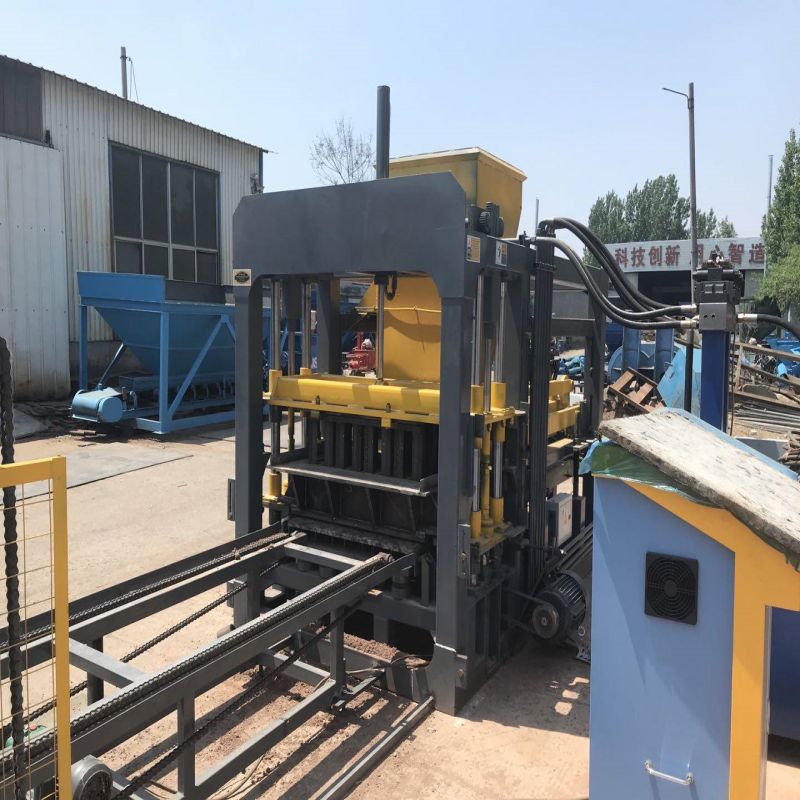
Image source:Aiwei block machine
Introduction
Automation and robotics have become increasingly prevalent in various industries, and the Chinese brick making machine sector is no exception. The integration of automation and robotics in brick making machines has revolutionized the traditional brick manufacturing process, enhancing efficiency, precision, and productivity. In this article, we will explore the advancements and benefits of automation and robotics in Chinese brick making machines and their impact on the industry.
Increased Efficiency and Productivity
One of the primary advantages of automation and robotics in Chinese brick making machines is the significant increase in efficiency and productivity. Automated systems can perform repetitive tasks with high speed and precision, surpassing human capabilities. Robots can handle tasks such as material handling, mixing, molding, and brick stacking, reducing the need for manual labor and accelerating production cycles.
Automation also allows for continuous operation, enabling brick making machines to run 24/7 without interruptions. This continuous production capability enhances overall productivity, reduces downtime, and increases the output of high-quality bricks. With automation, Chinese manufacturers can meet the growing demand for bricks more efficiently and effectively.
Enhanced Precision and Quality Control
Automation and robotics play a crucial role in improving the precision and quality control of bricks produced by Chinese brick making machines. Automated systems can perform tasks with consistent accuracy, ensuring uniformity in size, shape, and texture of the bricks.
Robotic arms equipped with advanced sensors and vision systems can inspect each brick for defects, such as cracks or irregularities, in real-time. This level of quality control helps to minimize wastage and ensures that only bricks that meet strict quality standards are selected for further processing.
Moreover, automation reduces human error and variability, resulting in improved product quality and customer satisfaction. The precise and consistent production achieved through automation and robotics in Chinese brick making machines contributes to the overall success of construction projects.
Occupational Health and Safety
Automation and robotics in brick making machines have a significant positive impact on occupational health and safety. The implementation of robots eliminates or reduces the need for human workers to perform physically demanding and potentially hazardous tasks.
Robotic systems can handle heavy loads and perform repetitive tasks without fatigue, reducing the risk of musculoskeletal injuries for human workers. By automating tasks such as material handling and brick stacking, Chinese manufacturers can create safer work environments and minimize the potential for accidents and injuries.
Furthermore, automation allows workers to focus on more skilled and value-added tasks, such as machine monitoring, maintenance, and quality control. This shift in job roles improves job satisfaction and creates opportunities for upskilling and reskilling within the industry.
Flexibility and Adaptability
Automation and robotics bring increased flexibility and adaptability to Chinese brick making machines. These systems can be programmed to accommodate various brick sizes, shapes, and designs without the need for extensive retooling or manual adjustments.
By utilizing programmable controllers and advanced software, brick making machines can be easily reconfigured to meet changing market demands. This flexibility allows manufacturers to respond quickly to customer preferences, adapt to new construction trends, and introduce innovative brick designs.
Robotic systems, equipped with interchangeable grippers or end effectors, can handle different types of materials and bricks, further enhancing the versatility of brick making machines. This adaptability enables Chinese manufacturers to cater to a wide range of customer requirements and maintain a competitive edge in the market.
Cost Savings and Return on Investment
While the initial investment in automation and robotics may be substantial, the long-term benefits result in significant cost savings and improved return on investment (ROI) for Chinese brick making machine manufacturers. Automated systems streamline production processes, reduce labor costs, and minimize the risk of errors and rework.
Automation leads to improved operational efficiency, allowing manufacturers to produce bricks at a faster rate with fewer resources. Additionally, the enhanced quality control and reduced wastage result in cost savings by minimizing material losses.
Furthermore, the continuous operation capability of automated systems maximizes production output, leading to higher revenues. Chinese manufacturers can leverage the advantages of automation and robotics to optimize their manufacturing processes, achieve economies of scale, and enhance their overall profitability.
Conclusion
The integration of automation and robotics in Chinese brick making machines has transformed the industry, revolutionizing production processes, improving quality control, and enhancing overall efficiency and productivity. Automation brings numerous benefits, including increased efficiency, enhanced precision, improved occupational health and safety, flexibility, and cost savings.
As technology continues to advance, the capabilities of automation and robotics in brick making machines will only expand, leading to further improvements in productivity, customization, and sustainability. The adoption of automation and robotics positions Chinese brick making machine manufacturers at the forefront of the industry, allowing them to meet the evolving demands of the construction sector and contribute to its growth and development.
